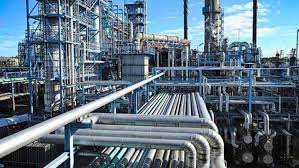
Ike Amos
31 March 2016, Sweetcrude, Abuja — Oando Energy Resources, OER, has recorded an improvement in its top and bottom line figures, as its revenue grew by 7.97 percent to $455 million in its 2015 financial year, compared to revenue of $421.4 million recorded in the 2014 financial year.
The company, in a presentation to its shareholders, also announced net income of $16.1 million in 2015, compared to a net loss of $320 million in 2014.
According to the company, the increase in its revenue was primarily as a result of the acquisition of ConocoPhilips’ producing assets of Oil Mining Leases (OML) 60 to 63, countered by a substantial decline in crude oil and natural gas sales prices, while the improvement in its net income was as a result of the decrease in the non-cash impairment of assets, which was partially offset by lower commodity prices.
Commenting on the result, Mr. Pade Durotoye , Chief Executive Officer of OER, said,
“Despite broader macroeconomic and commodity price challenges, 2015 proved to be an operationally successful year for us as we maintained our production output and successfully reduced our debt obligations with the restructuring of our hedge instrument.
“2016 will be focused on maintaining our production levels through low-cost rig-less activities and intensifying our efforts on Cash and Cost management.”
The company said its production in 2015 increased to 19.9 million barrels of oil equivalent, boe, an average of 54,520 boe per day, from 9.1 million boe, averaging 24,945 boe/day in 2014.
Oando Energy further stated that during the fourth quarter of 2015, production decreased to 4.8 million boe, an average 52,637 boe/da), compared with 5.0 million boe, an average 54,721 boe per day in the fourth quarter of 2014.
According to the company, the increase between the annual periods is primarily as a result of the input from the Nigerian onshore and offshore assets acquired on July 30, 2014 from the ConocoPhillips Company that included substantial production from OMLs 60 to 63, significant reserves and resources, and a considerable base of development and exploration opportunities.
It, however, stated that gas production reduced quarter on quarter as a result of the production constraints arising from the Ebocha flow-station fire.
The company added that in 2015, approximately 46 percent of crude oil production was hedged, adding that at December 31, 2015, 9,617 barrels per day of crude oil production was hedged at an average of $65 per barrel with expiries ranging from July 2017 to Jan 2019, and further upside if certain price targets are met, which represented 43 percent of the fourth quarter production of crude oil.
The company said in December 2015, it entered into an agreement to sell its interest in OMLs 125 and 134 to the operator for cash proceeds of $5.5 million and assumption of $84.5 million in cash call liabilities due to the joint venture while it added that the divestment requires lender and regulatory consent.
“In October 2015, the Corporation increased the capacity of the Senior Secured Facility and Corporate Finance Facility by $90.7 million; proceeds from the loan and cash on hand were used to repay the $100 million subordinated debt facility and fees of $4.6 million,” the company said.



